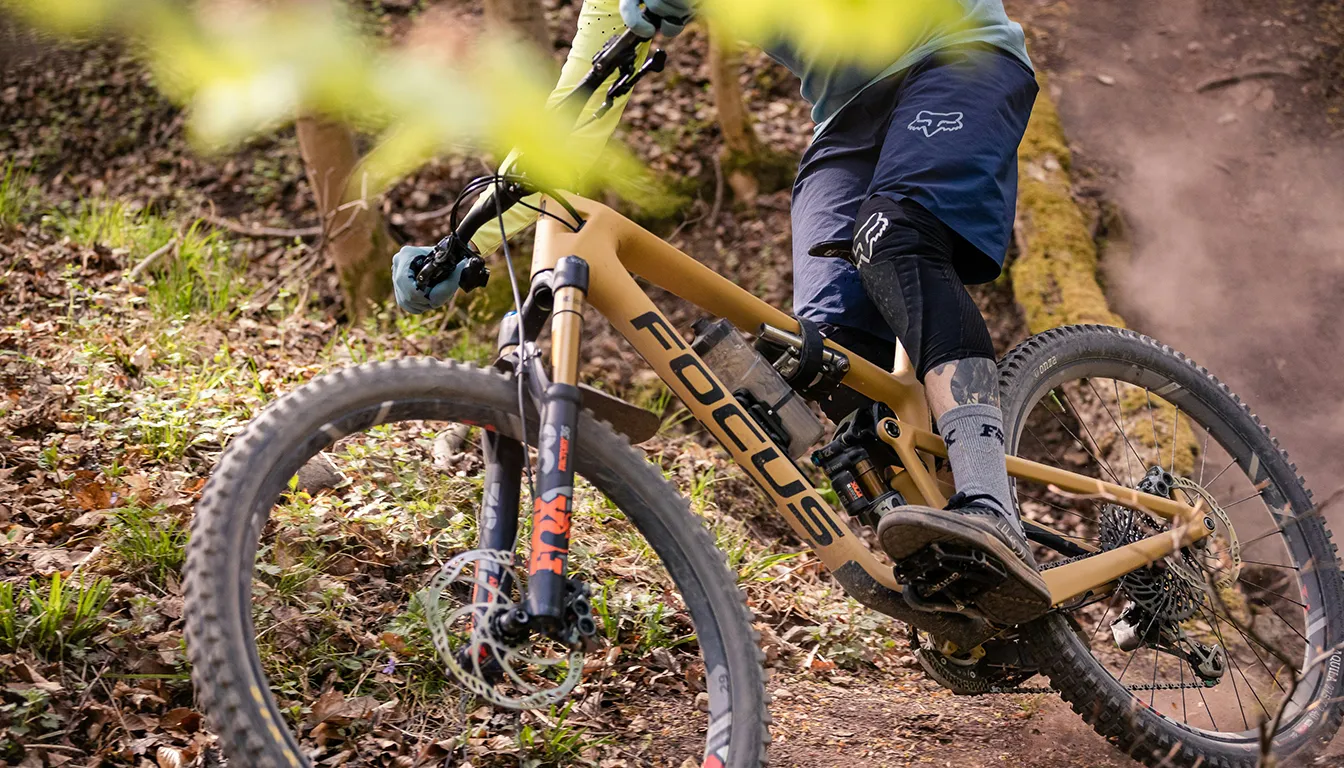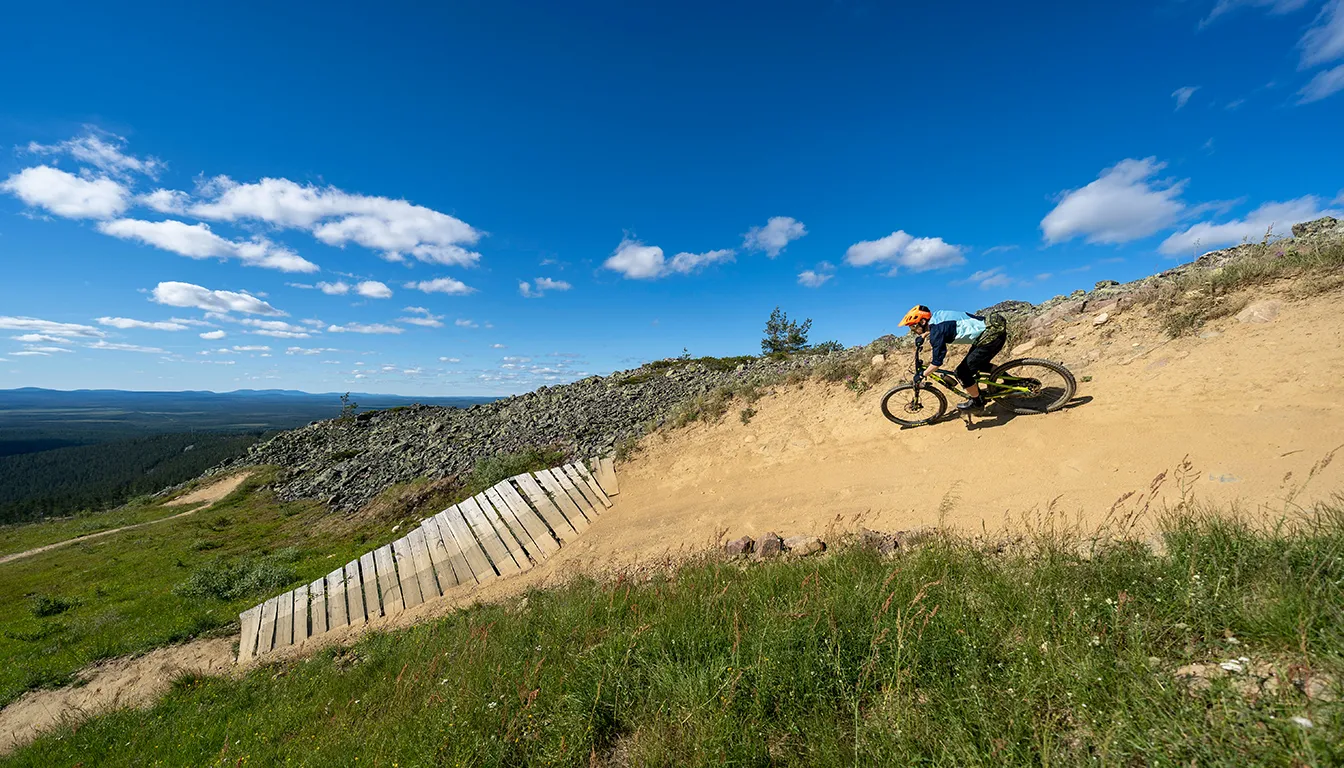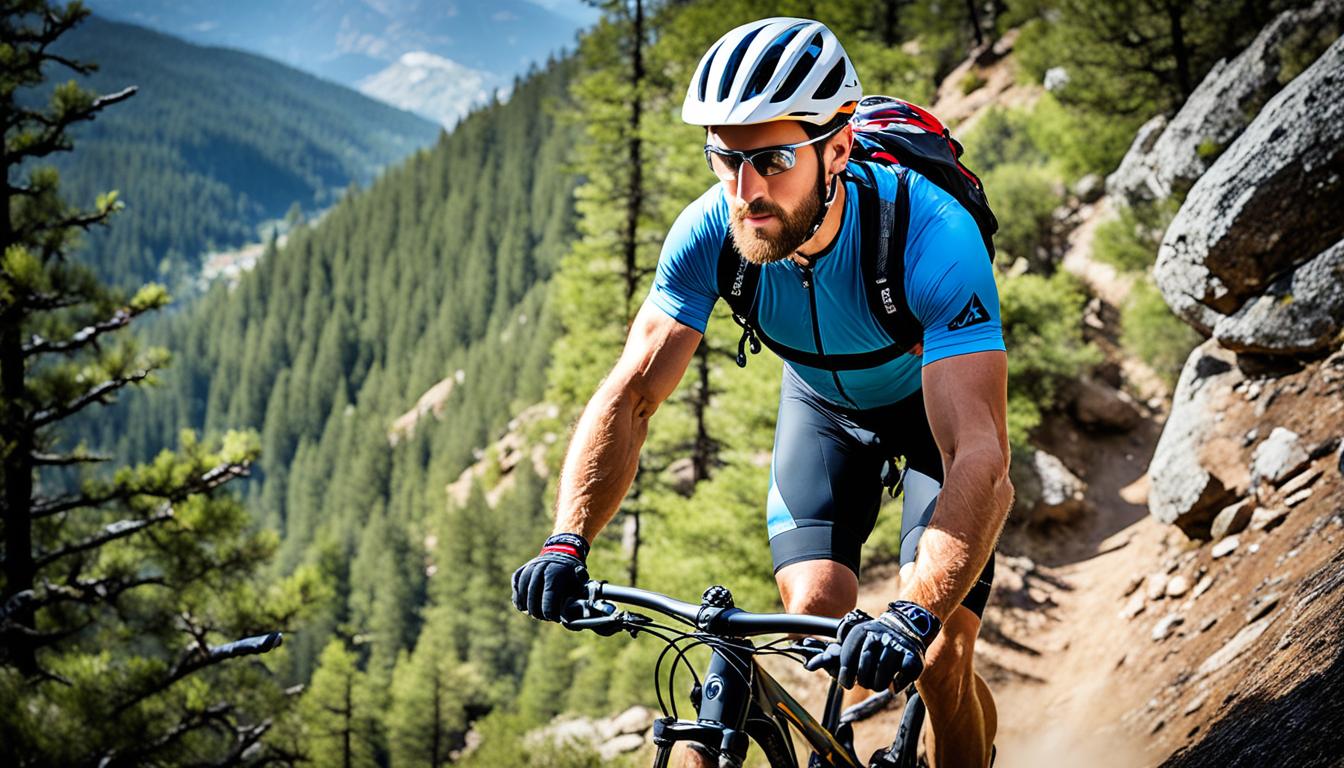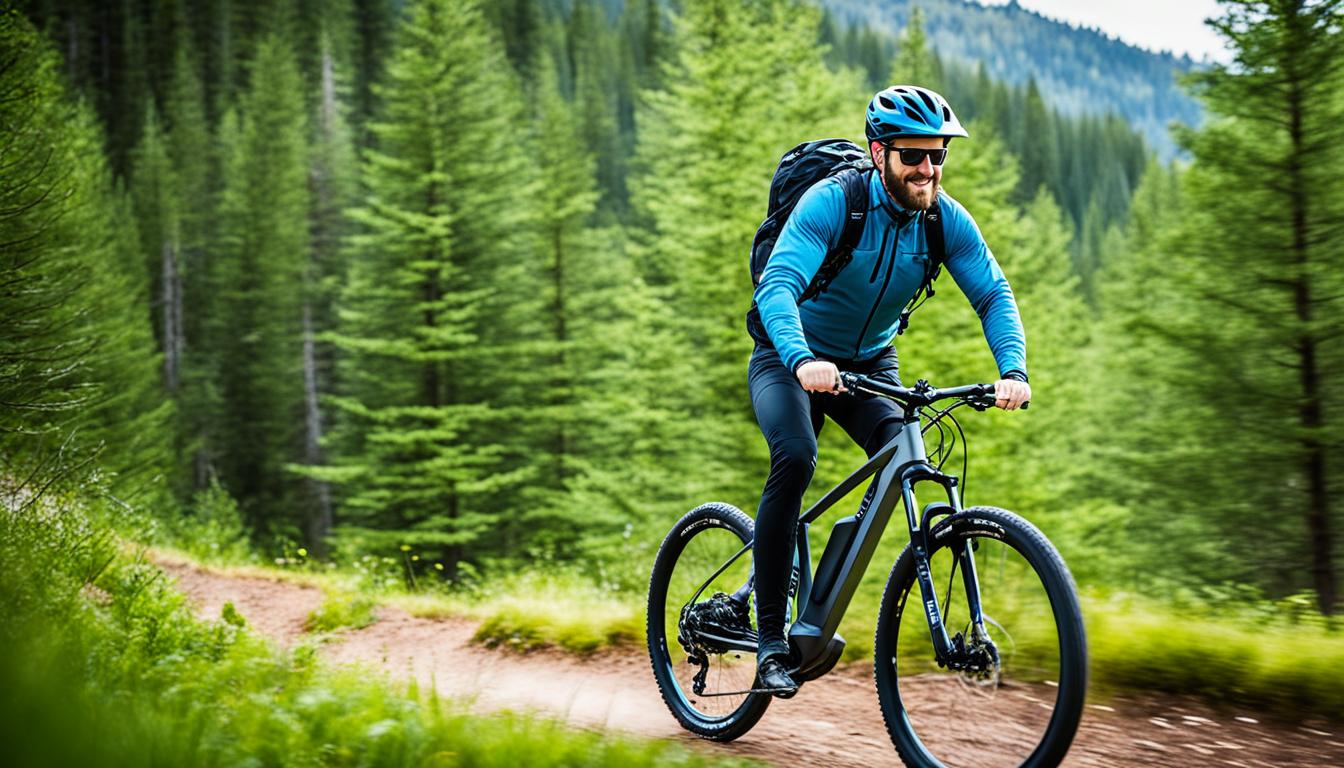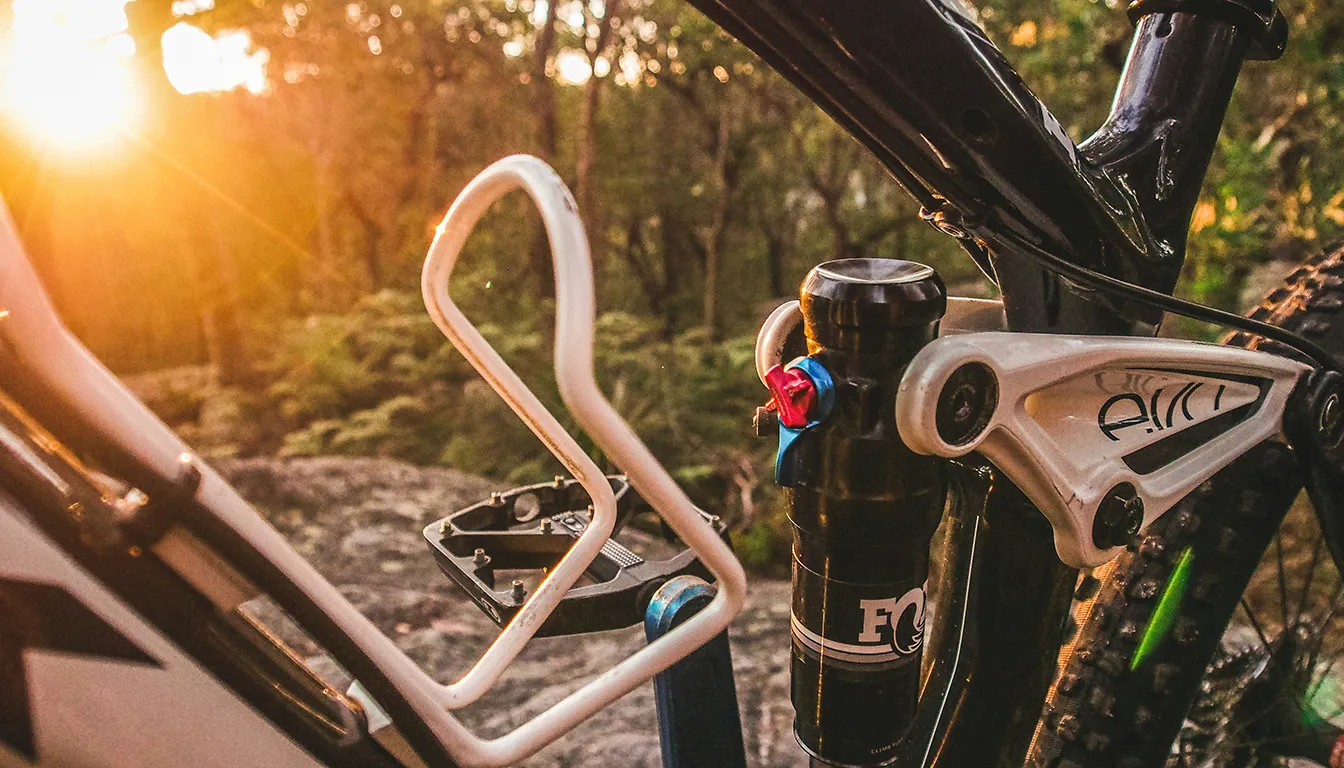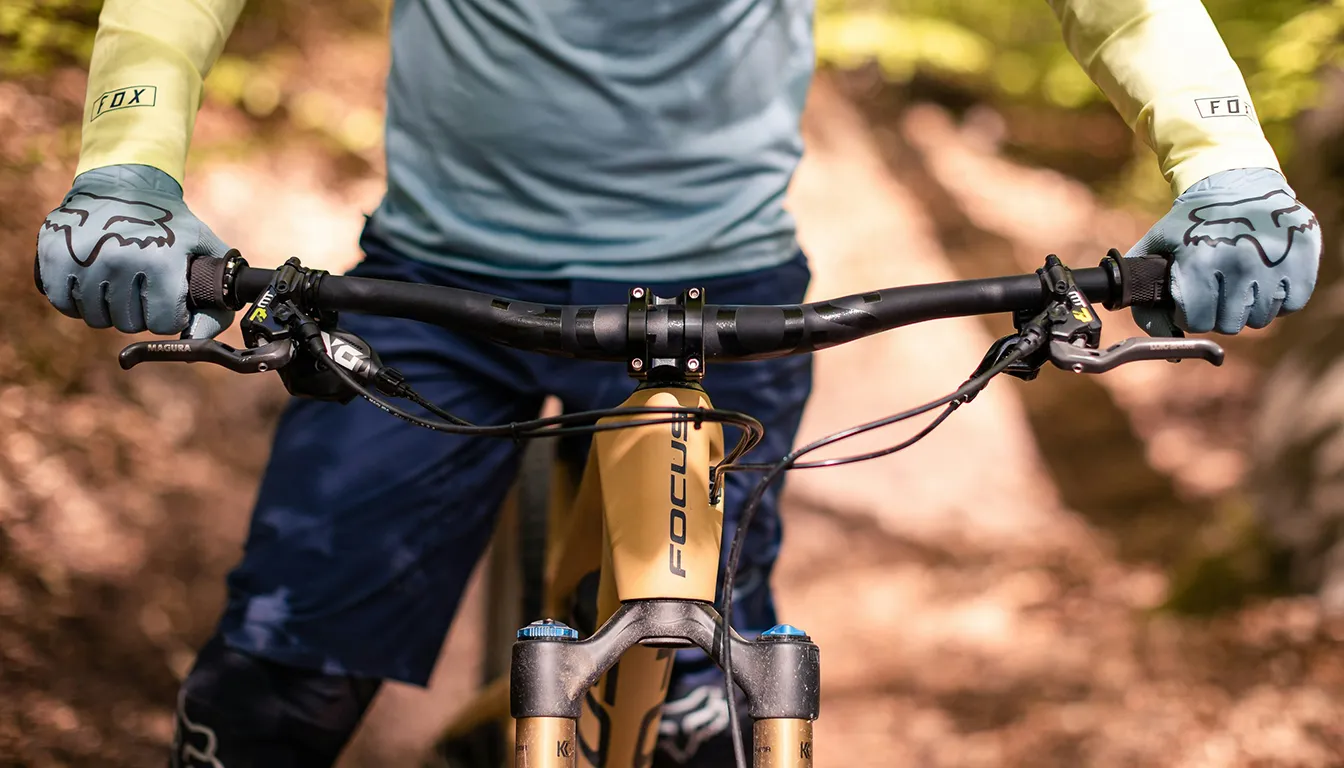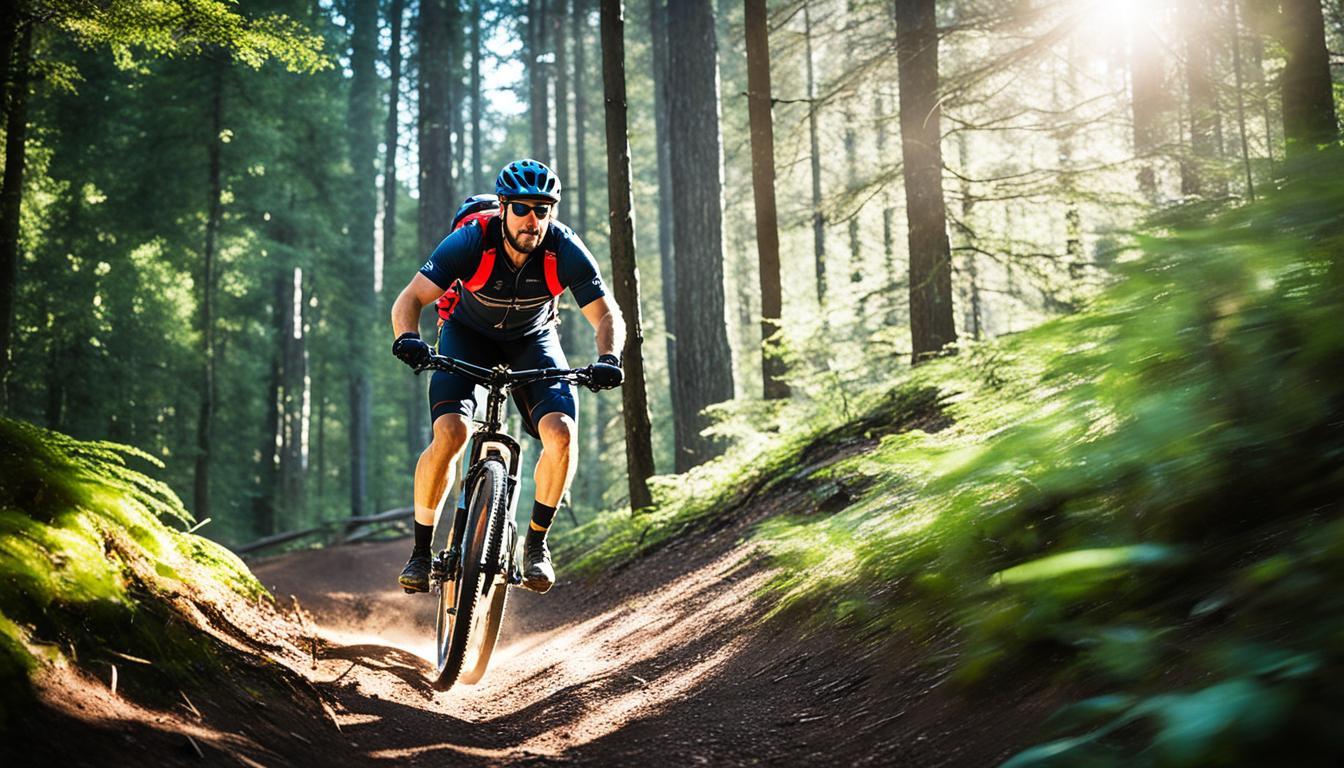Trail mountain biking involves many skills for safely riding on different terrains. Mastering these skills makes riding safer and more enjoyable. This article looks at key mountain biking skills such as understanding trails, climbing, descending confidently, and tackling obstacles.
To get better at biking, practice a lot and consider specialised training. Beginners should learn to gauge trails and set up their bikes right. Knowing how to descend and turn with confidence helps on tough trails. For tips on improving your skills, check out expert advice and exercises.
Improving your fitness and strength can make bike handling easier. It’s also important to follow riding etiquette and safety rules to help everyone enjoy biking. Quality training can prepare you well for the trails. With proper prep, you’ll ride confidently and enjoy the outdoor bike adventures.
Understanding Trail Grades for Beginners
Starting mountain biking? Knowing the trail grades is key. This ensures you pick paths that suit your skill level. Trails are graded from easy to extreme. They’re categorised as green, blue, red, or black, based on difficulty.
Exploring Green Trails
Green trails are the easiest. They’re flat and wide, making for a smooth ride. These paths are great for beginners, offering simple routes without tough challenges. They’re an excellent first step into mountain biking.
Moderate Blue Trails
Blue trails are a step up, suitable for those with a bit of off-road experience. They feature climbs, descents, and some technical aspects. Expect to navigate through small obstacles like tree roots and rocks. It’s slightly more challenging than green trails.
Difficult Red Trails
Red trails offer a significant challenge. They have difficult climbs and technical descents. These paths include features like drop-offs and bigger rocks. Good fitness and experience are needed to enjoy them safely.
Severe Black Trails
Black trails are for expert riders only. They feature steep climbs and demanding obstacles. These trails test your skills and fitness to the max. They’re perfect for those seeking extreme biking adventures.
Essential Techniques for Trail Mountain Biking
Getting the right skills in mountain biking is key for safety and fun on the trails. Learning important techniques helps you control better and feel more confident. Here’s what to concentrate on:
Proper Body Position
It’s crucial to keep a good body stance when facing different types of ground. A balanced pose with bent knees helps you adapt quickly to changing conditions. Riders need to learn moving their weight to the bike’s front when going uphill to better grip.
When turning corners, tilt the bike and keep your upper body straight to smoothly get through bends. This tips greatly aids in staying stable.
Braking Techniques
Knowing how to brake properly is a game-changer in riding. Using both brakes at the same time helps stop safely, and easing into the brake levers prevents skidding. Try out various braking methods on different terrains to see what suits best.
Keep balanced and be careful with the front brake when going downhill.
Shifting Gears
Changing gears right is vital in trail riding. Lower gears help with uphill climbs by giving the power needed, while higher gears are best for going down slopes or flat areas. Practising gear changes before riding trails makes transitions smoother.
Focus on how you distribute your weight when climbing for better traction. Starting with easy slopes will help grow your confidence. Knowing these tips thoroughly improves your biking skills, making trail rides more enjoyable.
Mastering Climbing Techniques
Climbing is a key part of mountain biking. It brings challenges that need special skills and strategies. Learning to climb well can make your biking on trails much better.
Gear Shifting When Climbing
Shifting gears correctly is vital for steep climbs. Move to lower gears before going uphill to keep your pace and avoid getting too tired. Getting used to changing gears helps manage your energy better when climbing. Trail Rider Magazine states that 85% of experienced bikers think mastering these techniques is crucial for advanced riding.
Weight Distribution for Ascents
How you position your weight matters a lot when climbing. Leaning forward improves the grip of your back wheel. This is especially important on tough surfaces. Trying this on different grounds improves your strength and confidence.
Doing specific exercises, like interval training, can boost your stamina by 20%. This is according to the International Mountain Biking Association. Better stamina means you can climb easier.
Descending with Confidence
Going downhill with confidence is key to enjoying mountain biking and staying in control. Using the right techniques helps keep you safe and efficient on steep paths. It’s about where you place your body, how you brake, and picking the best path through tricky spots.
Body Position for Descents
Staying stable when going downhill means getting your body position right. You should lean forward, keeping your back flat and elbows out. This stance helps spread your weight evenly, giving you better control. It also stops the bike from turning too sharply and keeps your ride smooth and safe.
Braking on Steep Trails
Knowing how to brake properly on steep descents is crucial for your safety. Be careful with the front brake to avoid flipping. Practice braking on different types of ground. Lightly tapping the brakes, instead of slamming them, helps control your speed and keeps the tyres gripping the trail for a smoother ride down.
Choosing the Right Line
Finding the best way down a hill needs skill in spotting the right track. Looking ahead and planning your route helps you dodge obstacles while keeping your speed up. This keeps your ride flowing and lets you adjust quickly to changes on the trail.
Corners: The Art of Cornering
Cornering is a key skill that makes mountain biking more exciting. Learning proper cornering techniques helps riders tackle tricky parts of the trail confidently. To corner well, keep your body low to stay balanced. Also, looking ahead to where you want to go is crucial for choosing the best path.
It’s important to practice on different types of corners, like sharp turns and big curves. Knowing when and how to enter and exit corners can boost your speed when you leave them. A good line choice can make you 20% faster as you come out of a turn. This leads to smoother rides and helps you go faster on the trails.
- Focus on vision and line selection to improve cornering efficiency.
- Ensure proper body positioning to reduce the risk of crashes.
- Practice smooth braking techniques for effective speed control.
- Utilise the full width of berms to boost your speed significantly.
- Master the pumping technique to increase speed through corners.
Spending time to perfect your cornering techniques will significantly enhance how well you do and enjoy mountain biking. Applying these tips makes rides safer and more thrilling.
Handling Trail Obstacles Effectively
Riders of all skill levels often meet mountain biking obstacles. Learning to handle these effectively boosts both speed and safety. Knowing how to deal with tough spots makes riding smoother and enhances your fun on the trail.
Approaching Rocks and Roots
Keeping a steady pace is key when nearing rocks and roots. Slightly lift your front wheel to go over obstacles. Use your arms and legs to keep stable. This way, you can face different terrains confidently, without losing grip.
Techniques for Jumping Obstacles
Jumping techniques, like bunny hopping, are crucial to master. They let you handle bigger mountain biking obstacles with ease. Regularly practicing these moves ensures smoother rides across tricky trails.
To get better at mountain biking, check out essential techniques for cross-country mountain biking.
Trail Etiquette and Safety Measures
Knowing how to behave on trails and keeping safe are key for mountain biking fans. It’s important to respect other people using the trails. This way, everyone can have a good time outdoors without worry.
Respecting Other Trail Users
It’s nice to be friendly to hikers and other bikers on the trails. If you’re biking uphill, you get to go first. If you see horse riders, get off your bike and walk near them without scaring the horses. Make sure to go slow and let people know when you’re about to pass them. This keeps things safe and fun for everyone.
Essential Safety Gear
Wearing helmets and protective gear helps you stay safe. Always check your bike to make sure it’s ready for your ride. Bring along a spare tube and tools just in case. Keep an eye on the weather, too. Wearing a rain jacket and drinking lots of water are good ideas to stay prepared.
Maintaining Your Bike
Looking after your bike is a must. Check it over for any damage before you go out. Pay special attention to the brakes and tyres. This reduces the risk of problems and makes your ride safer and more enjoyable.
Conclusion
Learning key mountain biking techniques improves your riding fun and safety. Knowing trail grades helps pick right challenges for your skill level. Beginners should start with small jumps, then move to bigger ones. It’s also important to use the correct gear when climbing.
Improving how you climb and go downhill is vital. Keep your weight balanced, especially on steep slopes. Use the land to gain speed without pedalling too hard. Getting good at cornering lets you steer through trails smoothly.
Following trail rules and focusing on safety makes riding better for everyone. Quality equipment reduces the chance of getting hurt. Being friendly with other riders creates a happy trail community. With these mountain biking tips, you’re set for exciting rides on varied terrains.
FAQ
What are trail grades and why are they important?
Trail grades show the difficulty of biking paths. They help riders pick the right trail for their skills. This keeps riders safe and makes biking more enjoyable.
What should I wear for trail mountain biking to ensure safety?
For safety, wear a helmet, gloves, padded shorts, and protective pads. The right clothes also keep you comfortable on your ride.
How can I improve my climbing skills for mountain biking?
To get better at climbing, shift gears before going uphill. Lean forward to increase traction. This helps keep your speed steady.
What is the best way to approach corners while riding?
Stay balanced and look ahead when turning corners. Practising different turns improves your technique and control.
How do I handle obstacles like rocks and roots on trails?
Keep your speed steady when you see rocks and roots. Lift the front wheel a bit. Use your arms and legs to absorb the bumps and stay stable.
Why is trail etiquette important for mountain bikers?
Good manners, like letting hikers go first, create a friendly trail environment. It keeps everyone safe and makes biking fun for all.
What techniques can I use to brake effectively on descents?
When going downhill, keep your weight even. Use both brakes gently, focusing on the front brake. Practice braking on different grounds to get better.
